Film Inquiry Recommends: Great Australian Genre Films

Alex is a 28 year-old West Australian who has a…
Over at our official Facebook page, we are currently posting daily film recommendations, with each week being a different theme. This is a collection of those recommendations! This week’s theme is Great Australian Genre Films.
The term ‘Genre’ cinema usually encapsulates the genres of sci-fi, exploitation, horror, action and thriller, highlighting the more action-packed and stimulating side of cinema. Whilst every film inherently has a genre, the reason that these extreme films are given the title of genre cinema is due to their nature of not sticking to standard formulas that those genres are associated with. We can all picture what the typical rom-com is in our heads, but it is hard to pinpoint a horror film, due to its diverse nature.
This week we have focused on Australian Genre films, just a selection from the rich history of exploitation and eclectic cinema that has emerged from Australia from the past 40 years.
1. Road Games (1986, Richard Franklin)
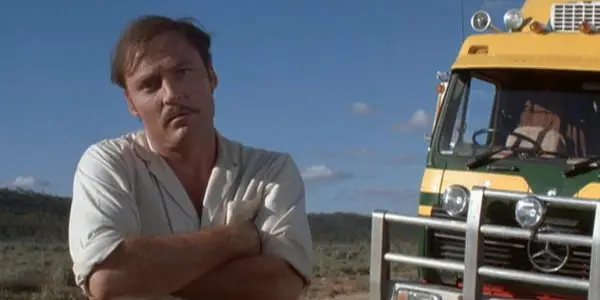
The best way to describe Road Games is a reverse of Spielberg’s classic film Duel – instead of an anonymous truck stalking a smaller vehicle on the road, Road Games is about a smaller vehicle stalking a man in a truck in a tense game of rural cat and mouse. Richard Franklin’s Road Games is one of the most underrated films of the infamous Australian Exploitation era, a period in film which brought out the best in Australian genre cinema, including George Miller’s hugely influential Mad Max.
Franklin had a history in exploitation cinema, with his first two films being comedy/softcore pornography hybrids; The True Story of Eskimo Nell and Fantasm, with the success of Fantasm allowing him to make Patrick, one of the defining horror films of the exploitation period. After this, he followed it up with Road Games, a smart Hitchc*ckian thriller which at the time was the highest budget for an Australian film ever, due to its leading American stars Stacy Keach and Jamie Lee Curtis (in one of her earlier Scream Queen roles).
Road Games is about lone truck driver Patrick Quid (Stacey Keach), an American who is stuck doing long distance driving through the barren terrain of Australia, a very boring job that has lead to an overactive imagination and the necessity to constantly play mental games with himself. Driving a large truckload of Pork to Perth, Western Australia, Quid and his dingo ‘Boswell’ hear frequent chatter on the radio about a serial killer going around murdering lone women at random.
When Quid notices a suspicious occupant of a hotel he is meant to stay at, Quid starts to suspect it may be the killer and slowly stalks him on his up to Perth. When Quid’s predictions seem to be correct and the killer notices Quid’s stalking, an anxious psychological battle between the two commences, especially when lone American hitchhiker Pamela (Jamie Lee Curtis) enters the picture as well.
Whilst it is easy to call any ol’ thriller ‘Hitchc*ckian’, Road Games uses his established techniques in intelligent fashions, creating a genuinely tense and unpredictable film, which uses its unique Australian landscape to its advantage. Whilst Richard Franklin’s direction is very tight and the film uses some smart cinematography choices (especially during the night sequences), the film is kept together by the terrific leading performance of Stacey Keach, one of America’s most underrated character actors.
Keach is an actor most well-known for his voice acting due to his distinctive old school voice, but Road Games really shows off his ability as a commanding leading man, a role which he didn’t get as many chances at. Road Games has been described by Ozploitation aficionado Quentin Tarantino as one of his favourite Australian films and it’s easy to see why, a stylish suspense film which uses its influences well and one which has seemingly flown under the radar in recent years.
2. Wake in Fright (1971, Ted Kotcheff)
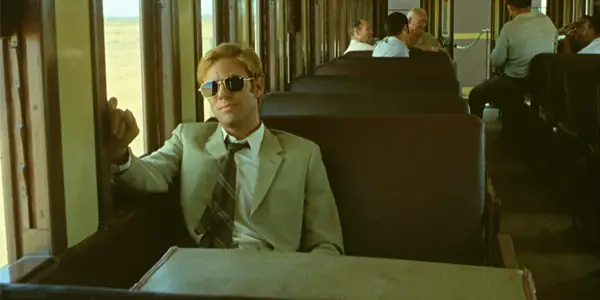
Wake in Fright is frequently referred to as the greatest Australian film of all time, a claim that is quite interesting considering it wasn’t directed by an Australian director, but by the Canadian Ted Kotcheff, the man most well known for introducing Rambo into the world with First Blood. Between this and Nicholas Roeg’s Walkabout, it’s fascinating to see that the most critically acclaimed Australian films outside of George Miller’s Mad Max franchise are directed by non-Australian filmmakers.
This could be seen as a foreign vision having to ability to create unique art, separated from patriotism, allowing for a more unique and isolated interpretation of a country’s atmospheric potential. Whilst not receiving much attention upon time of release, the reputation of Wake in Fright has increased considerably over time, especially due to its new remastered re-release and its high praise from American director Martin Scorsese.
After finishing another year teaching in a remote outback town in Australia, John Grant (Gary Bond) departs for Sydney to have a relaxing holiday with his girlfriend. Whilst waiting for a connecting train to Sydney in the middle of nowhere, John takes part in a gambling spree which leads him to be broke very quickly, making him depend on the local civilians to survive long enough to get back home. The trip takes a nightmarish turn as John becomes more desperate, stuck in a scorching hot atmosphere, constantly drinking booze to pass the days away. His situation gets worse when he is taken in by ‘Doc’ Tydon (Donald Pleasence), a crazed kangaroo hunter who takes an unusual liking to Grant, leading some of the film’s more shocking sequences.
The film received a controversial reputation upon release due to its scenes featuring real-life Kangaroo hunting, inserted to shock the audience and make them feel awful, similar to the turtle-eating sequences from Cannibal Holocaust. The reason for Wake in Fright’s glowing reception is due to its perfect encapsulation of transforming the Australian outback into a hellish entrapping landscape, with Ted Kotcheff treating John Grant’s tragic trip as a sun-scorched horror film, rather than a standard drama.
Gary Bond’s central performance really sells John’s increasing desperation, as he is slowly being controlled and transformed into another one of alcohol-filled degenerates that occupy the mining town. Donald Pleasance solidifies his great character acting status, delivering a truly unsettling performance which puts the audience on edge as soon as he’s introduced, with his crooked smile hiding a much more sinister persona. Wake in Fright is a film which truly earns its reputation, a special Australian genre film which really pushes the boundaries.
3. Noise (2007, Matthew Saville)
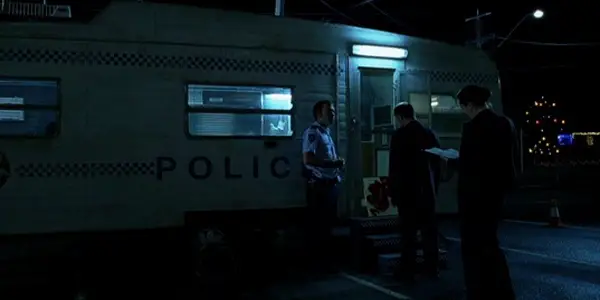
Noise is an intimate crime drama from Australian director Matthew Saville, his debut film which launched his directing career which includes Felony in 2013 and just recently the comedy A Month of Sundays. Noise follows the investigation of two seemingly unrelated murder cases – the innocent fiance of Dean Stouritis (Luke Elliot) and the massacre of 7 people onboard the local train.
The film follows two people associated with the cases – Graham McGahan (Brendan Cowell), a cop who is pulled off casework due to his increasingly worse tinnitus, which has forced him to be stuck within a police information van in the middle of town. The other protagonist is Lavinia Smart (Maia Thomas), the only survivor of the train massacre who not only is suffering from the psychological aftermath of the attacks, but is scared that the murderer might track her down to finish her off. Like all great noir tales, the two plotlines intersect in an unpredictable fashion which keeps the narrative constantly interesting.
Noise is a subversive take on the murder-mystery genre, one where the protagonist is simply too distracted and unaware to figure out who the murderer is. A similar concept was visited in the exceptional Gene Hackman film Night Moves, a neo-noir film which also subverts the standard tropes. Noise replaces the know-it-all savvy detective with a cop suffering from tinnitus who is not smart enough to piece together the horrific crime that has gone down.
Noise does feature some problems prevalent with most Australian dramas, such as slow, deliberate sequences which drag down the narrative and a dreary existential atmosphere which removes any pure enjoyment from the watching experience. Despite this, Noise is still one of the more interesting Australian genre pictures to come out within the past 10 years, one which employs some notable cinematic tricks to tell its story.
4. The Chain Reaction (1980, Ian Barry)
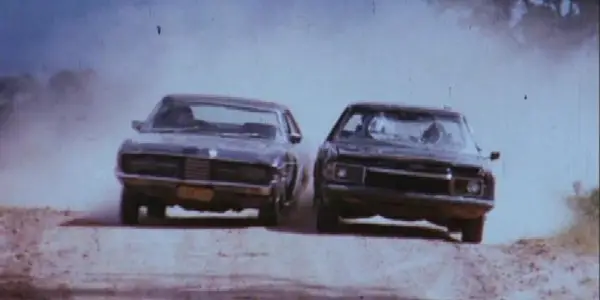
A quirky cousin to the Mad Max franchise, The Chain Reaction is an independently produced car chase/dystopian road movie directed by Ian Barry, with the driving scenes directed by Mad Max’s George Miller. The other connection to Mad Max is the overlap of several actors, such as Steve Bisley (who plays the main role here as Larry), Hugh Keays-Byrne (as a friendly lawyer friend of Larry) and an uncredited cameo by Mel Gibson (who appears for only 1 minute as a mechanic).
Whilst the film has many elements of the original Mad Max film, it’s a very different creature. The film is about Larry and Carmel, a vacationing couple that find and shelter Heinrich Schmidt, a survivor of a nuclear plant meltdown, who must warn the public of the effects of the surrounding areas. A corrupt police force and the mysterious forces of the nuclear plant start to close in on the trio, so Larry must use his great driving skills to get everyone to safety.
Due to its independent/low budget nature, it follows the practice of many similar B-Movies, where a lot of the production funds are put into the start and end of the film, which houses the best action scenes of the film. Some nice practical car chase work is done, which hooks the viewer, but the middle is quite meandering and gets a bit boring. The film is commenting on the dangers of nuclear power and the physical effect on human life, adding some more darker layers than seen in other traditional car B-Movies. A unique little Australian film, the director Ian Barry only went on to make one more feature after this and loads of TV work (much like Miracle Mile’s Steve De Jarnatt).
5. Ghosts… of the Civil Dead (1988, John Hillcoat)
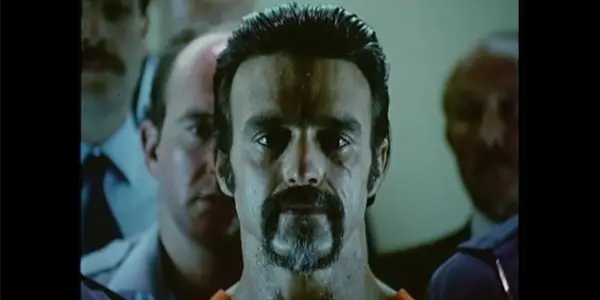
The debut feature of Australian director John Hillcoat, whose new film Triple 9 has just come out in cinemas, is a mainstream cop procedural which is a large departure from his work here. Based on Jack Henry Abbott’s 1981 prison memoir, “In the Belly of the Beast”, Hillcoat, along with his fellow co-writers Evan English, Gene Conkie, Nick Cave and Hugo Race wrote an authentic, episodic but often brutal jail film.
This film is one of Hillcoat’s many collaborations with musician Nick Cave, who worked on the script, did the score and acts in the film. Alongside Cave, the film casts ex-prisoners in some of the roles, who were consulted by former prison guards, which adds a realistic feel to the picture. Due to the nature of the novel the film is based off, the film has an eclectic, vignette style, which threads multiple narrative threads towards a slowly erupting prison riot in the fictional Central Industrial Prison. Hillcoat uses a variety of different cinematic techniques, developed by his years making music videos, which include multiple voice-overs, montages and frequent colour palette changes.
The film takes place within Central Industrial Prison, a facility built to imprison the most violent and chaotic criminals. In the past 37 months the prison has existed in a state of permanent lockdown due to the uncontrollable inmates, which include the likes of Wenzil (David Field), the closest to a central character in the film, the violent Maynard (Nick Cave) and more, whose separate states of isolation and rage are quietly fuelling a toxic atmosphere, which is on the verge of a meltdown.
The film explores the themes of dehumanisation and the effects that the prison system has on those involved, including the prisoners and the guards that watch over them. Whilst not for the faint-hearted due to the film’s often violent imagery, it is an impressive debut which lead to a string of original genre pictures by Hillcoat, which include 2005’s The Proposition, 2009’s The Road and 2012’s Lawless. Sadly the film is quite hard to get a hold of, even with the film’s cult status due to Nick Cave’s involvement and the film’s subversive nature, one which deserves a high-def revival, especially with Hillcoat’s name being put into the mainstream knowledge as of late.
6. Next of Kin (1982, Tony Williams)
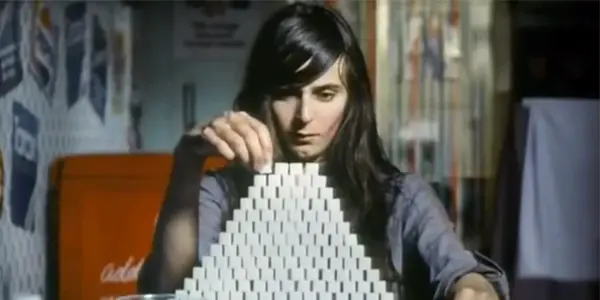
Often described as the Australian equivalent of Stanley Kubrick’s The Shining, Next of Kin is a severely underrated psychological horror film which takes time to build an uneasy atmosphere rather then relying on cheap jump scares. Directed by New Zealand director Tony Williams, who hasn‘t directed a feature film since this, made a great film that has flown under the radar, being slowly revived by die-hard horror fans. Anyone who wants to find out about the Ozploitation genre and how important it was to the history of Australian cinema should check out Mark Hartley’s terrific documentary on the subject, Not Quite Hollywood, which features insights into most of the films on this list, including this one, highlighting its underground status.
After the death of her mother, Linda (Jacki Kerin) her daughter, inherits the rest home that she owned, which houses a variety of old people. Going through her mother’s leftover items, she finds her old diary and once she starts reading it, old forgotten memories start to trigger within Linda, starting a supernatural chain of events which start to change Linda’s whole world. Ozploitation veteran John Jarratt (known for his villainous role in Wolf Creek) appears in the film as Barney, Linda’s boyfriend, who is affected by Linda’s changing lifestyle.
Much like The Shining, the film is a slow-burning descent into madness, as the film gradually builds to a crazy climax which should satisfy any horror fans that take their time with the film. Tony Williams manages to create an apprehensive atmosphere, built upon some eye-catching cinematography and a unique score which compliments the film well. This is a film which demands a Bluray release, which would allow people to finally check this film out, because at the moment the film is quite hard to track down.
7. Dead-End Drive In (1986, Brian Trenchard-Smith)
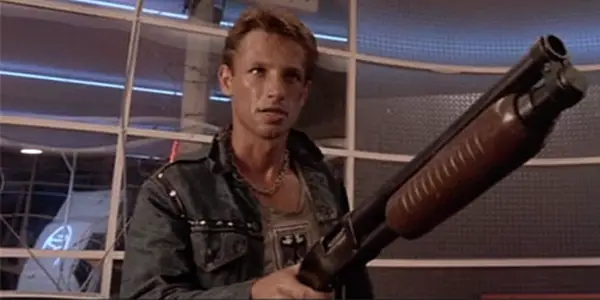
Another Australian film which has received the Quentin Tarantino stamp of approval, Dead-End Drive In is another fun Ozploitation film from one of the pioneers of the important Australian movement, Brian Trenchard-Smith. Brian Trenchard-Smith is responsible for quite a lot of the more well-known Ozploitation films released during that period of Australian cinema, including such hits as The Man From Hong Kong, Turkey Shoot, BMX Bandits and much more.
Set within an ambiguous future (much like the Mad Max films), a nuclear holocaust has caused a worldwide economic collapse and the collapse of a civil society, leaving it in a lawless state where violence rules the streets and cops try to control the unfiltered rise of crime. Stuck in the middle of this is regular guy Jimmy “Crabs” (Ned Manning) and his faithful girlfriend Carmen (Natalie McCurry), who decide to go to the local Star Drive-In. As the night goes on, the couple slowly realise that they have been trapped within the drive-in, which is being used as a maximum security youth prison.
Defying the violent prisoners that surround him, Crabs plans to break out before the cops or the prisoners take him down, in a break-out attempt which features a climactic stunt which at the time of shooting, was the most expensive stunt ever shot in Australia. Trenchard-Smith weaves some interesting social commentary within the film, creating a fun exploitation film which brings some fresh unique ideas to the post-apocalyptic genre.
What are some other great Australian genre films that you can recommend?
Does content like this matter to you?
Become a Member and support film journalism. Unlock access to all of Film Inquiry`s great articles. Join a community of like-minded readers who are passionate about cinema - get access to our private members Network, give back to independent filmmakers, and more.













